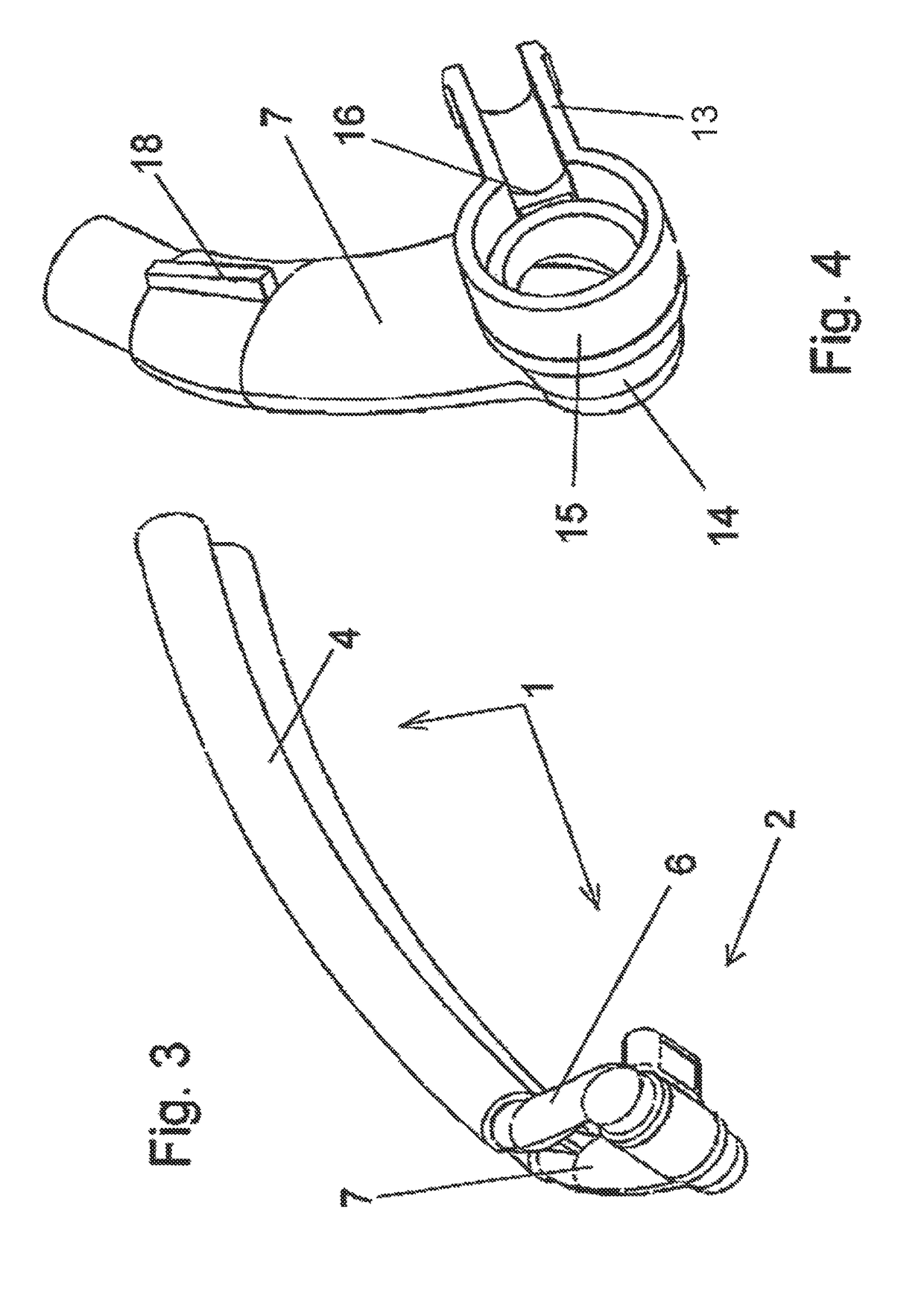Nasal adapter system for CPAP respiration
a technology of cpap and adapter system, which is applied in the direction of respirator, respiratory mask, etc., can solve the problems of not ideal producing pressure sores on or in the nose or on the face of the child, and the force and torque of the head, so as to minimize the accumulation of co2, facilitate the child's movement, and adapt to the individual size and shape of the head. simple
- Summary
- Abstract
- Description
- Claims
- Application Information
AI Technical Summary
Benefits of technology
Problems solved by technology
Method used
Image
Examples
Embodiment Construction
[0067]Referring to the drawings and in particular with reference to FIG. 1, an exemplary embodiment of the CPAP nasal adapter system 1 according to the present invention will be described below. The nasal adapter system 1 comprises essentially the nasal adapter 2 proper, which is provided with a joint 3 at its proximal end and at the distal end of which the proximal breathing tubes 4 of the adapter system are arranged. Not shown are the distal breathing tubes, which are coupled to the distal ends of the proximal breathing tubes 4 and lead to a respirator (not shown) or to other respiration device. As an alternative, the distal breathing tubes may, however, also be connected directly with the distal end of the adapter 2.
[0068]The proximal breathing tubes 4 comprise an inspiratory tube and an expiratory tube, which are arranged next to each other and are connected to one another, as this will be explained below.
[0069]As was described above, the proximal ends of the proximal breathing ...
PUM
 Login to View More
Login to View More Abstract
Description
Claims
Application Information
 Login to View More
Login to View More - R&D
- Intellectual Property
- Life Sciences
- Materials
- Tech Scout
- Unparalleled Data Quality
- Higher Quality Content
- 60% Fewer Hallucinations
Browse by: Latest US Patents, China's latest patents, Technical Efficacy Thesaurus, Application Domain, Technology Topic, Popular Technical Reports.
© 2025 PatSnap. All rights reserved.Legal|Privacy policy|Modern Slavery Act Transparency Statement|Sitemap|About US| Contact US: help@patsnap.com



